-
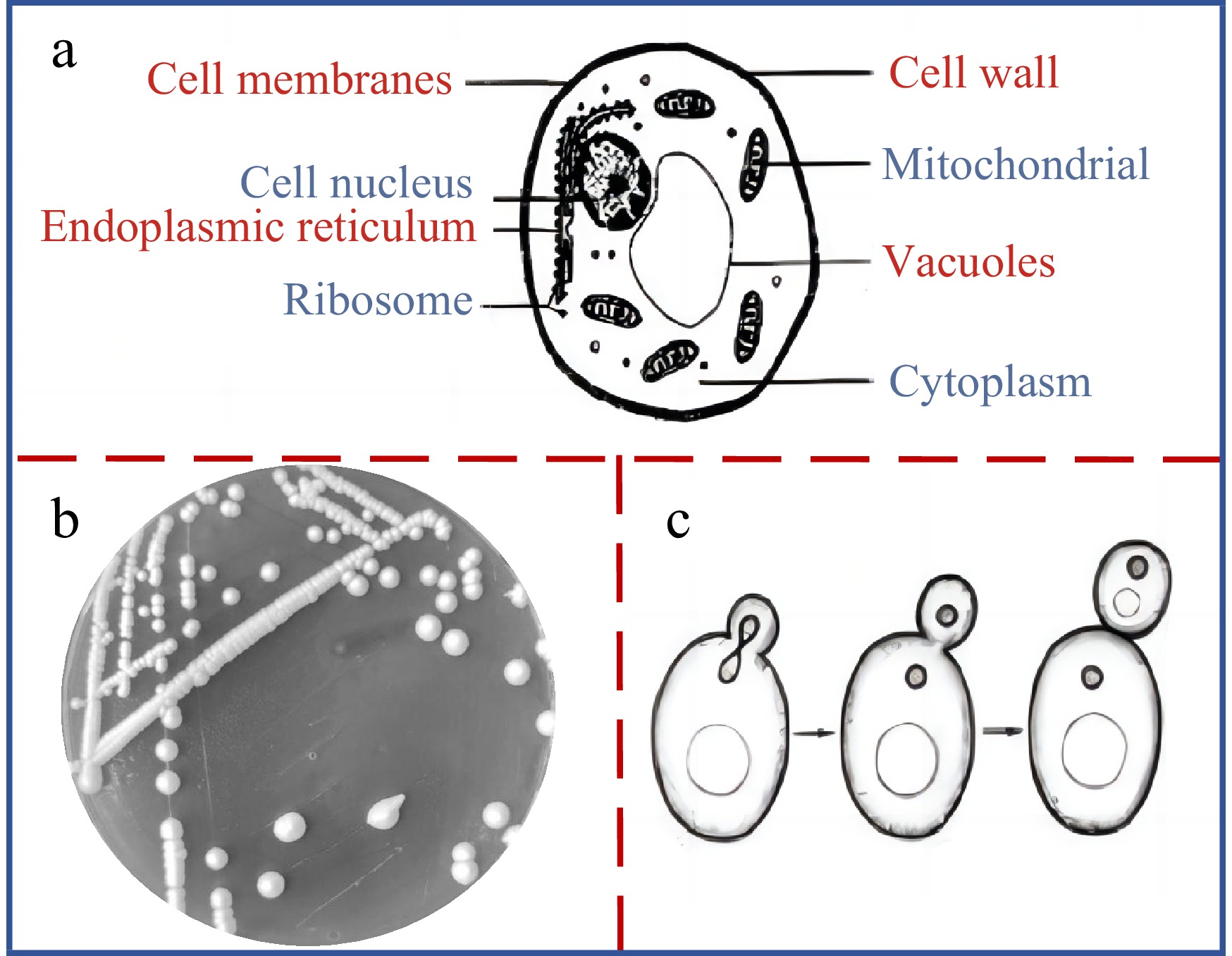
Figure 1.
The cell morphology, colony morphology and reproduction mode of Saccharomyces cerevisiae. (a) Cell morphology of Saccharomyces cerevisiae. (b) colony morphology of Saccharomyces cerevisiae. (c) reproduction mode of Saccharomyces cerevisiae.
-
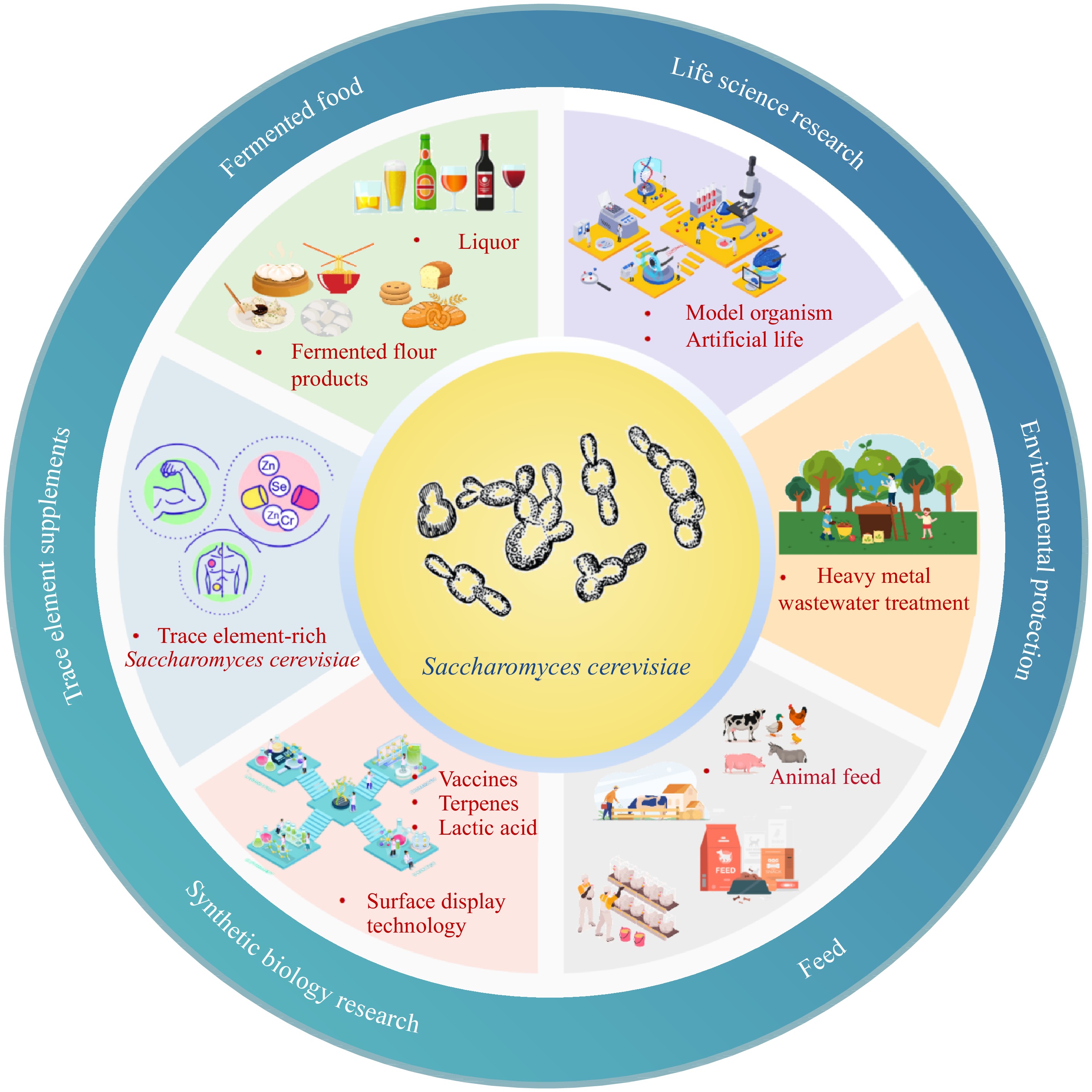
Figure 2.
Application of Saccharomyces cerevisiae in the fields of fermented food, trace element supplements, synthetic biology research, feed, environmental protection and life science research.
-
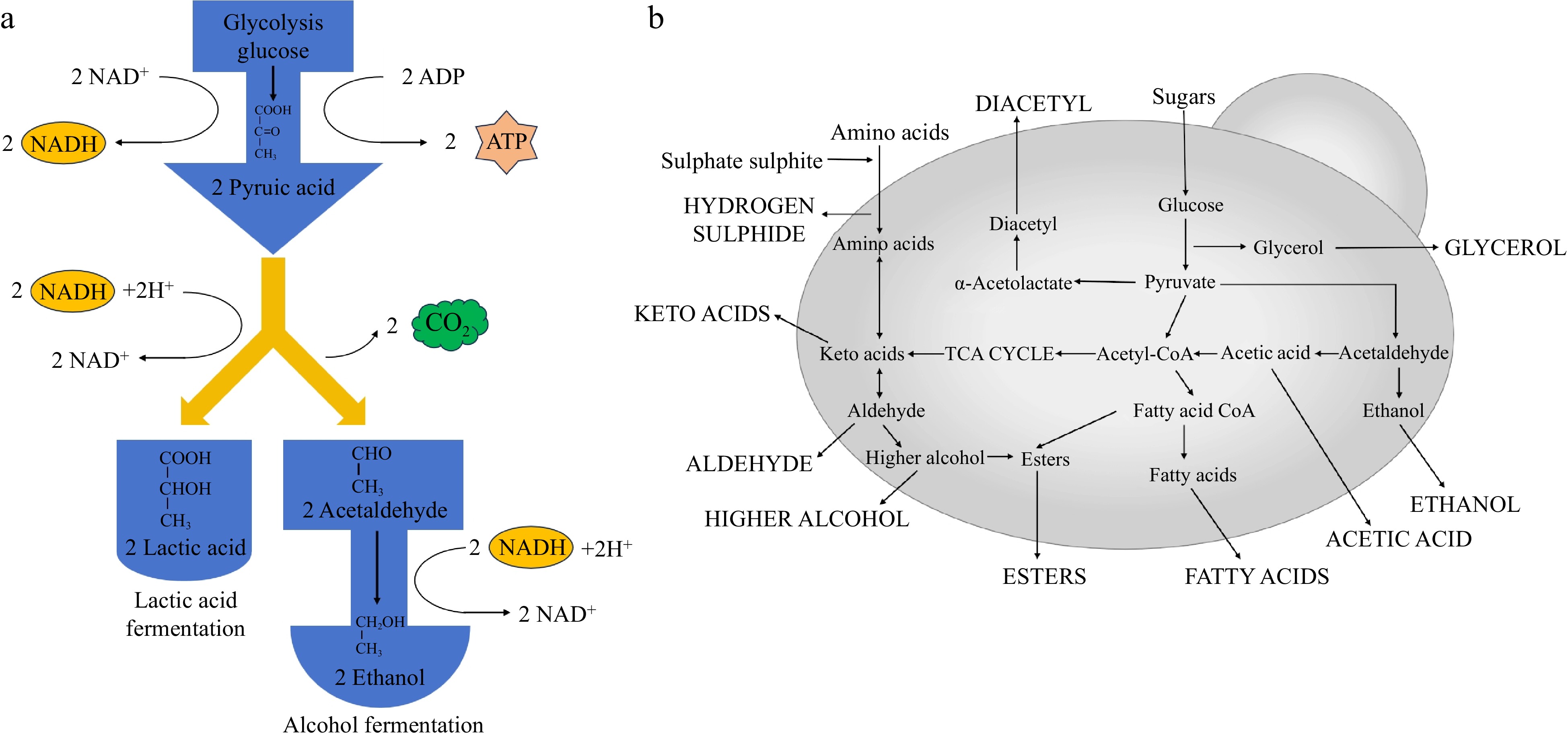
Figure 3.
(a) Ethanol fermentation by Saccharomyces cerevisiae, and (b) summary of Saccharomyces cerevisiae metabolic pathways yielding fermentation products[107].
-
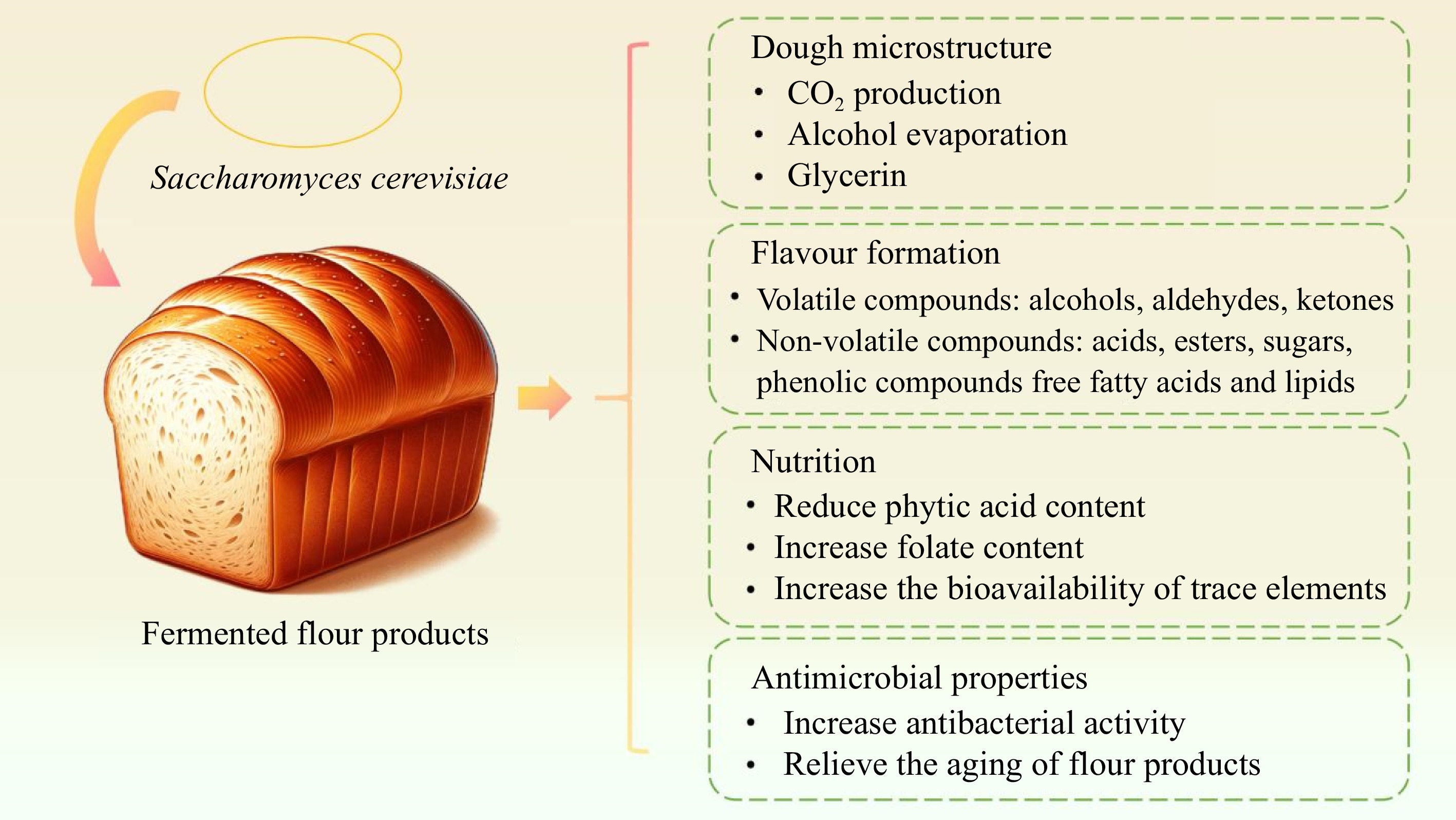
Figure 4.
Contribution of Saccharomyces cerevisiae to fermented flour products characteristics from several aspects.
-
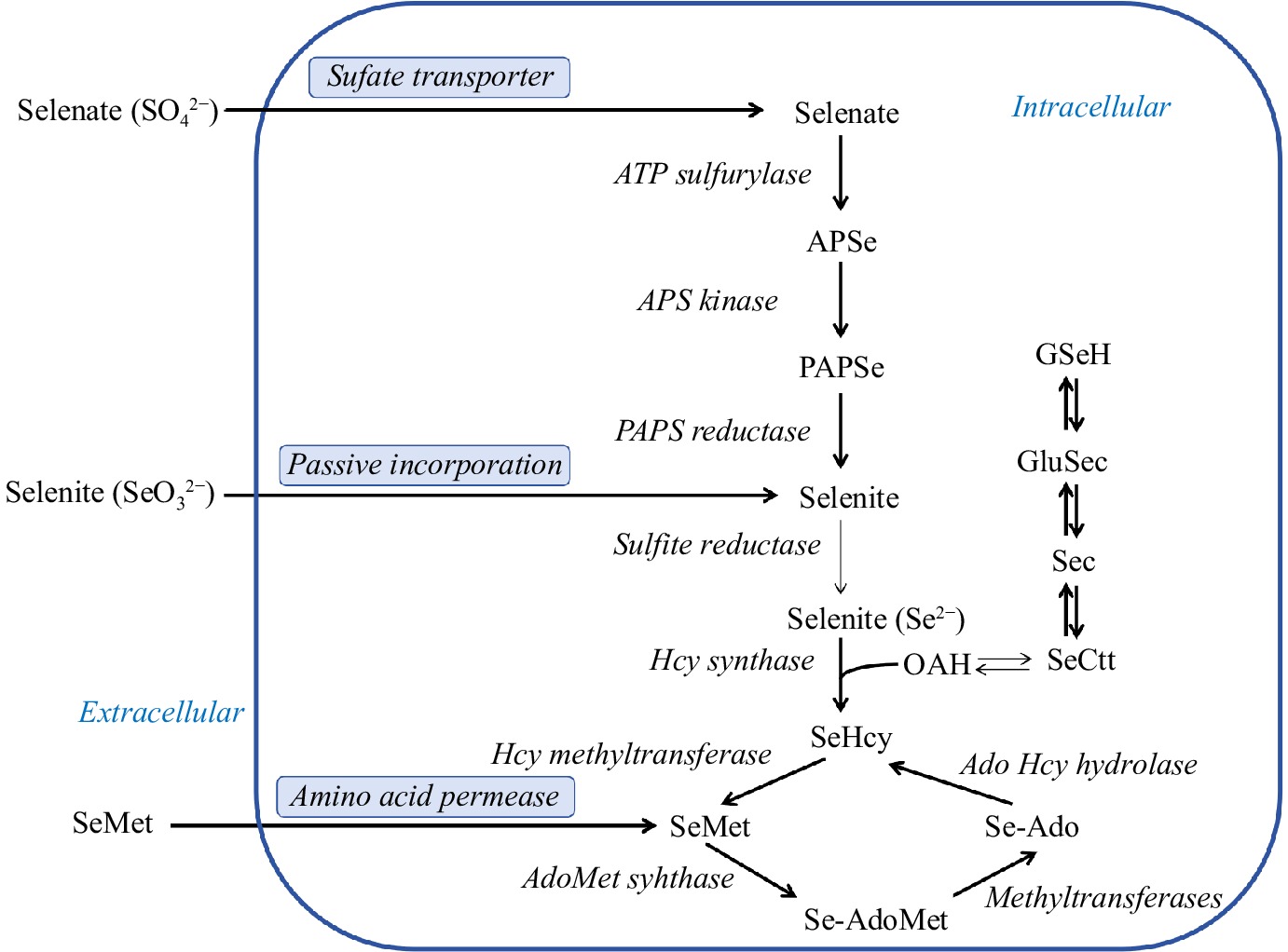
Figure 5.
Selenium metabolism in Saccharomyces cerevisiae. APS, adenine sulfate; APSe, adenine selenate; GluSec, γ-glutamine selenocysteine; GSeH, selenoglutathione; OAH, O-acetylhomoserine; PAPS, 3′-phosphoadenosine sulfate; PAPSe, 3′-phosphoadenosine selenate; SeCtt, selenocyst thionine.
-
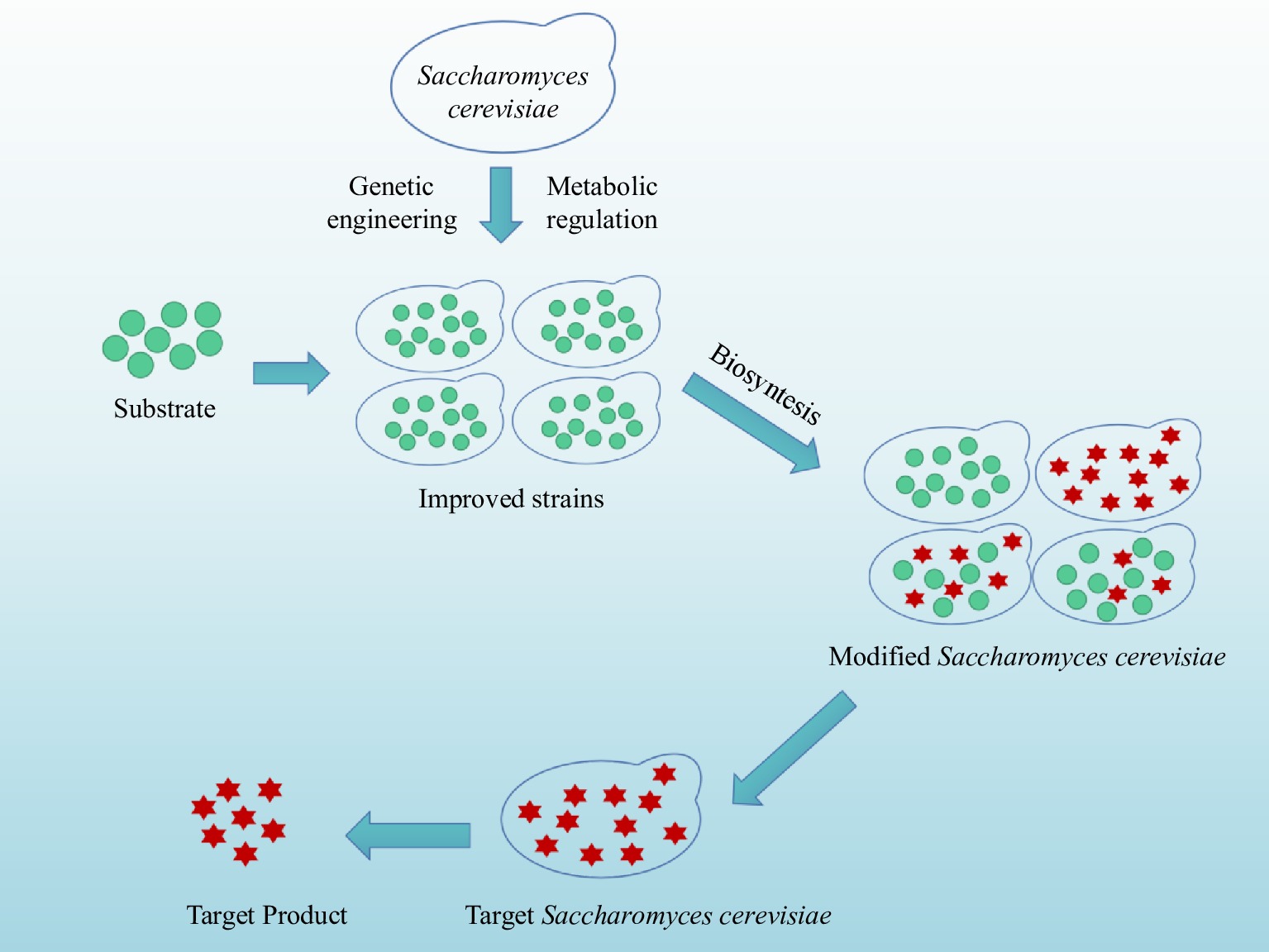
Figure 6.
Flowchart for the synthetic biology of Saccharomyces cerevisiae.
-
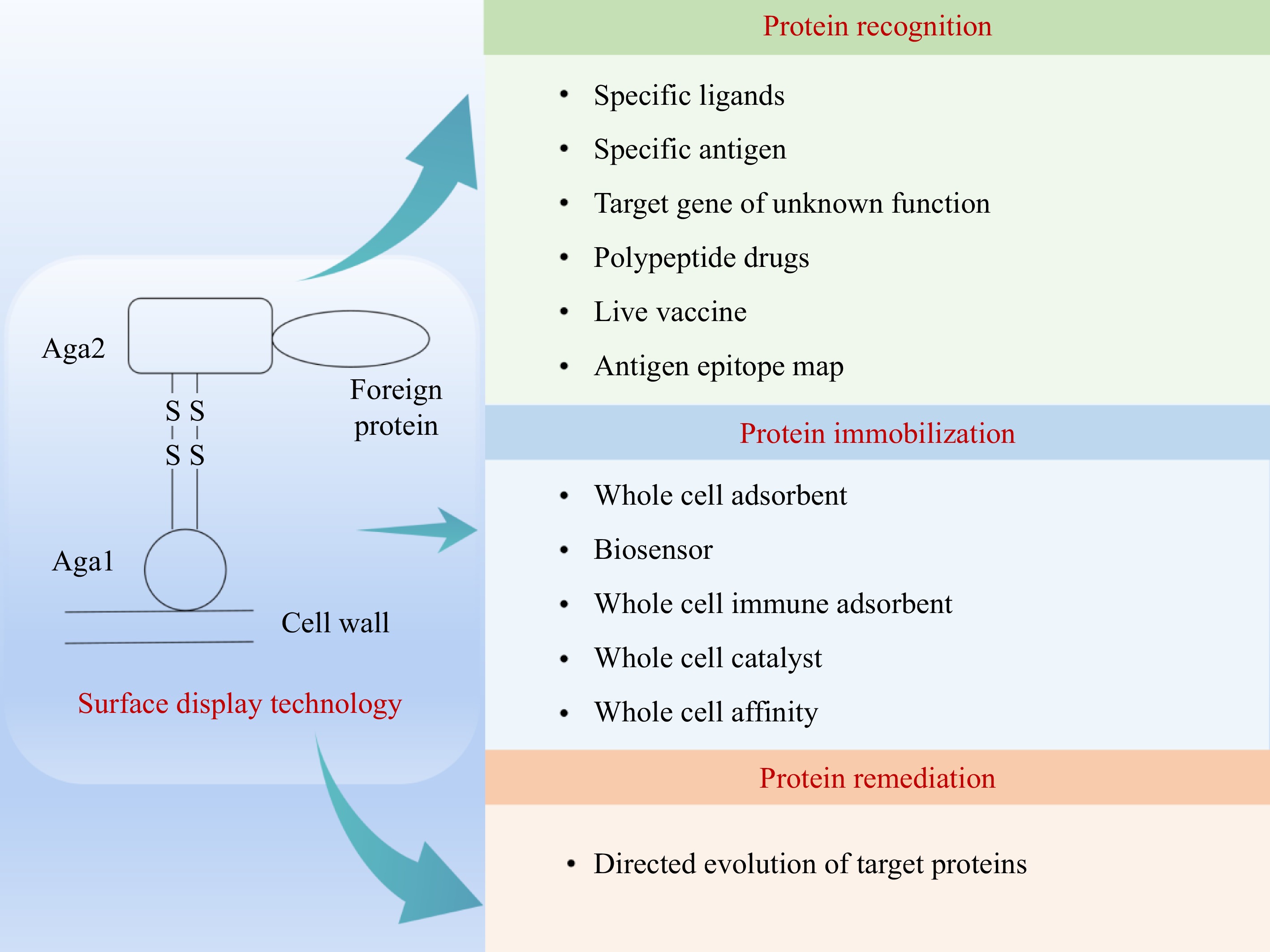
Figure 7.
Application of surface display technology in Saccharomyces cerevisiae.
-
Beverage Media Comments Ref. Wine Grape must Modern, large-scale wineries use specially selected starter cultures of Saccharomyces cerevisiae strains available in dried form (e.g., active dry yeast) from specialist yeast supply companies. [107] Beer (ale) Barley malt wort Lager yeasts are likely a natural hybrid (Saccharomyces cerevisiae & Saccharomyces eubayanus).Relatively few strains employed in lager fermentations. Lager strainsutilise maltotriose more efficiently than ale strains, and they ferment atcooler temperatures. Ale yeasts are polyploid strains. Numerous strainsemployed in ale brewing. Ale yeasts ferment at warmer temperaturescompared with lager yeasts. [107] Chinese rice wine (Huangjiu) Glutinous rice (Oryza sativa var. glutinosa) Saccharomyces cerevisiae play a key role in the yeast flora of Chinese rice wine, and are responsible for converting the main carbohydrates into alcohol and other organic compounds, as well as influencing the flavor, aroma and texture of Chinese rice wine. [108] Whisky Grains include barley, corn, rye, and wheat. Scotch whisky producers currently use selected distilling strains of Saccharomyces cerevisiae in three main formats, cream yeast, pressed (cake) and driedyeast. Malt whisky distilleries traditionally use pressed yeast, but largergrain distillers have now adopted cream yeast. Dried yeasts are not asprevalent as pressed and cream formats in whisky fermentations. [15,107] Rum Sugar cane molasses Saccharomyces cerevisiae strains in rum fermentations are developed as startercultures and provide faster fermentation with more higher alcohols andfatty acids, but less esters resulting in lighter style rums. [107] Brandy, Gin,Vodka, etc. fruit juices, grains or molasses, wheat or rye For brandies, cognac, etc. the base wine is produced by pure startercultures of Saccharomyces cerevisiae. For gin, vodka, ete. selected distilling strains of Saccharomyces cerevisiae will be used. [107] Table 1.
.Saccharomyces cerevisiae used in the production of alcoholic beverages, media and comments.
-
Compound class Example Flavour Comments Ref. Higher alcohols n-propanol; Isobutanol;
Iso-amyl alcohol
(3-methylbutan-1-ol); Phenylethanol;Alcoholic; Pharmacy;
Fusel, alcoholic, fruity, banana; Roses, perfumeIn moderate amounts, higher alcohols can enhance the flavor complexity and mouthfeel richness of alcoholic beverages, improving the organoleptic qualities of the drink. However, the presence of excessive amounts of higher alcohols may lead to an imbalance in the flavor of alcoholic beverages, producing an irritating or unpleasant sensation. [15] Esters Ethyl acetate;
Ethyl butyrate;
Ethyl caproate;
Ethyl caprylate;
Ethyl hexanoate;
Ethyl lactate;
Ethyl octanoate;
Iso-amyl acetateSolvent, acetone; Pineapple, banana, mango; Apple, aniseed; Apple; Pineapple, unripe banana; Butter/cream; Sour apple, apricot, fruity; Banana, fruity Esters increase the aromatic complexity of alcoholic beverages, improve the mouthfeel, and give them a rounder, fuller body. A moderate amount of esters gives alcoholic beverages a pleasant aroma of fruits, flowers, vanilla, etc. An excessive amount of esters can bring overly strong fruity or chemical solvent flavors. [109] Carbonyl compounds Acetaldehyde; Benzaldehyde; Green apple; Almond Aldehydes are usually present in trace amounts in alcoholic beverages and give them a floral and fruity flavor. Excessive amounts of aldehydes can give alcoholic beverages an irritating and unpleasant odor, and the winemaking process needs to be carefully controlled. [109] Organic acids Succinic acid,
Citric acid,
AceticacidSourness Acidity regulation of alcoholic beverages, the right amount of organic acid will increase the complexity of the drink and the richness of the mouthfeel, too much organic acid will produce an unpleasant sensation and affect the balance of the taste. [109] Polyols Glycerol A colorless, odorless, and non-toxic compound that has a sweet taste Glycerin has no direct effect on the aroma of alcoholic beverages, but its effect on texture and mouthfeel can indirectly influence the perception of flavor by moderating the harshness of alcohol and making other flavor compounds more pronounced. [15] Vicinaldiketones Diacetyl,
Pentane-2,3-dioneButter, butterscotch Diacetyl is a compound produced in the brewing of beer and some wines that gives liquors a buttery texture and aroma; Excess diacetyl is undesirable in most beers, resulting in an imbalance of flavors and a rancid butter or 'butterscotch' taste. [109] Sulphur compounds Hydrogen sulphide, Dimethyl sulphide, Sulphur dioxide, Thiols Rotten eggs The role of sulfides in alcoholic beverages is complex and varied, and they have a significant impact on the flavor of alcoholic beverages, both positively and negatively. For example in white wines, thiols contribute to the pleasant aroma of tropical fruits and blackcurrants. In excess, however, it can produce unpleasant rotten egg or rotting odors. [15] Phenolic
compounds4-Vinylguiacol Clove-like Some yeasts, including wild yeasts, that are POF+ (phenolic off-flavour) can produce undesirable phenolic flavoursand aromas. However, the clove-like compound, 4-vinylguiacol, is desirable in certain beer styles and can beproduced by hefe ale yeast strains of Saccharomyces cerevisiae. [15] Table 2.
Fermentation metabolites of Saccharomyces cerevisiae in alcoholic beverages.
Figures
(7)
Tables
(2)